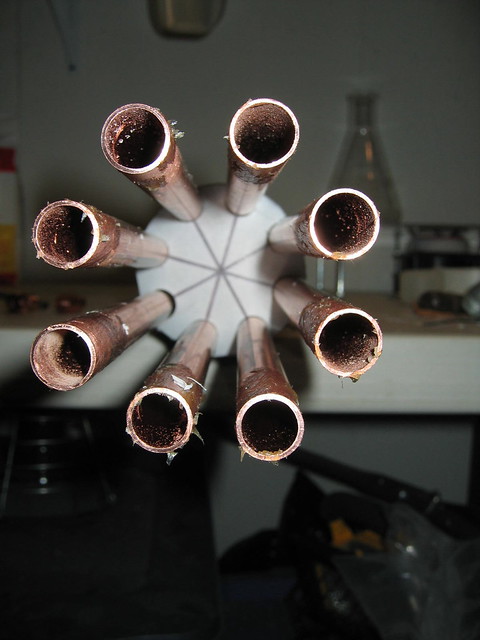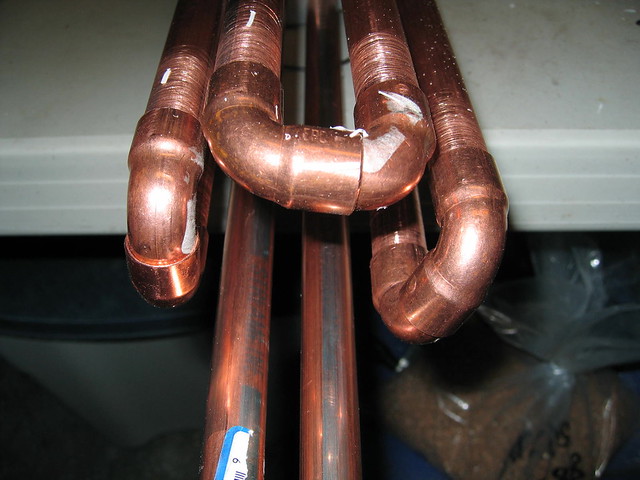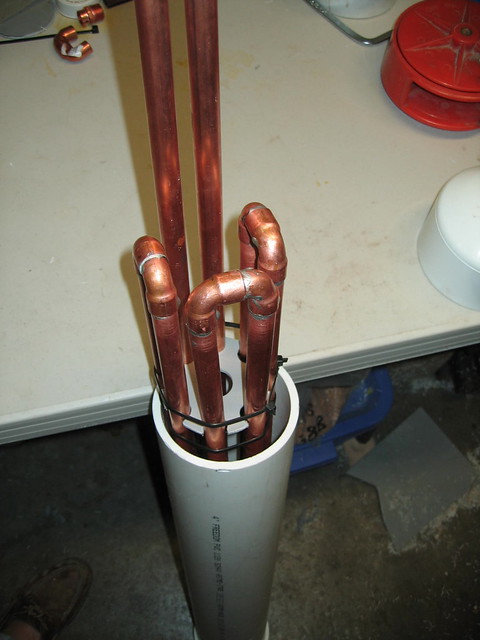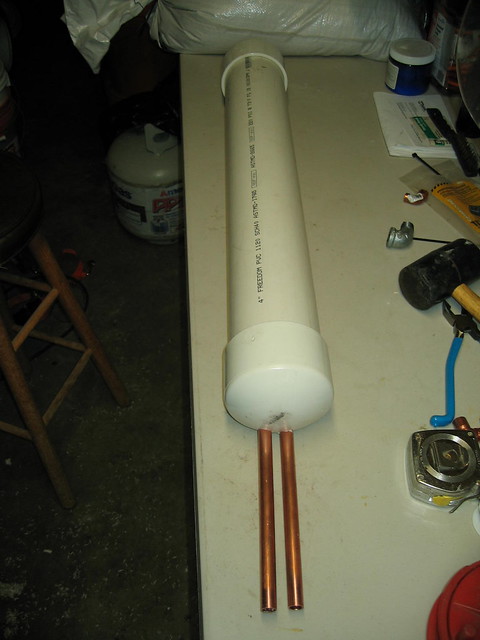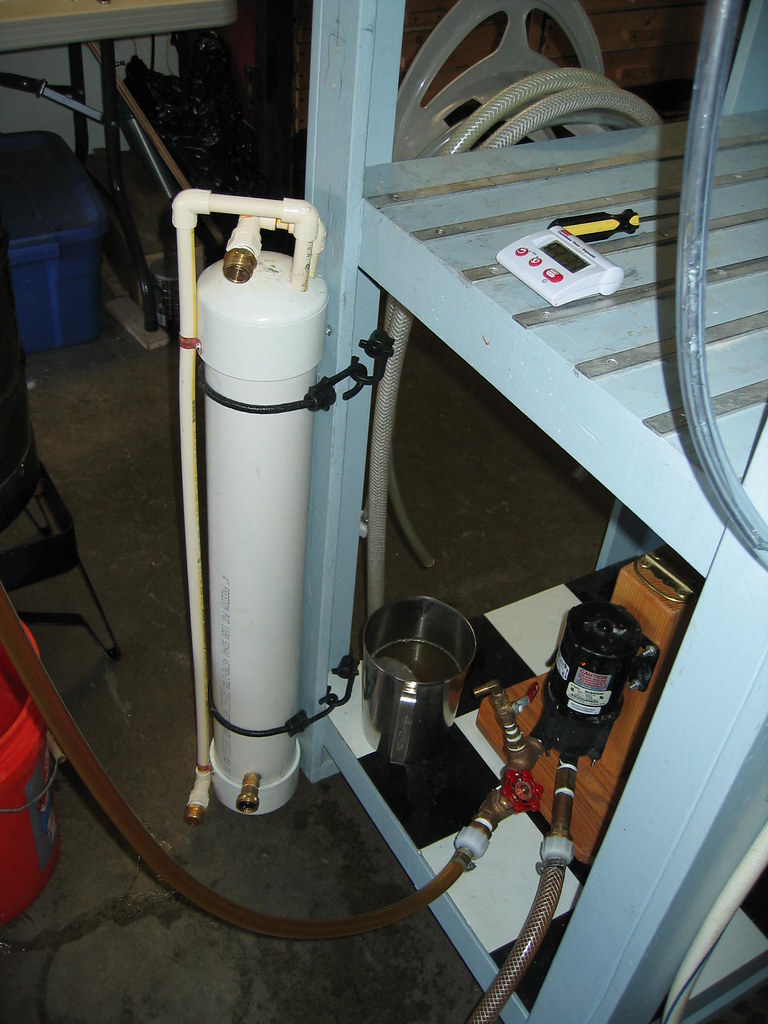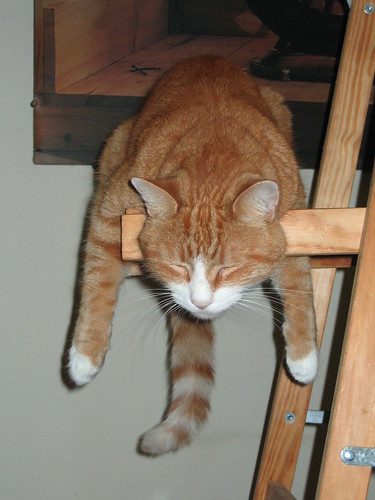I'm sure every idea has already been tried, but... would a copper pipe inside a cpvc pipe work as a CFC? I'm envisioning wrapping the copper pipe with copper ground wire, making the outside look threaded, to create some breaking up of the flow. The ends of the CPVC could be sealed around the copper pipe using compression repair fittings cut in half and glued to reducers in the end of the CPVC. I'm thinking that cut in half, or thirds, a 10 foot length length might do it. The ends of the copper pipes would be connected with elbows, and the CPVC sections connected with tees.
I made a graphic, but I can't post it.
I made a graphic, but I can't post it.


